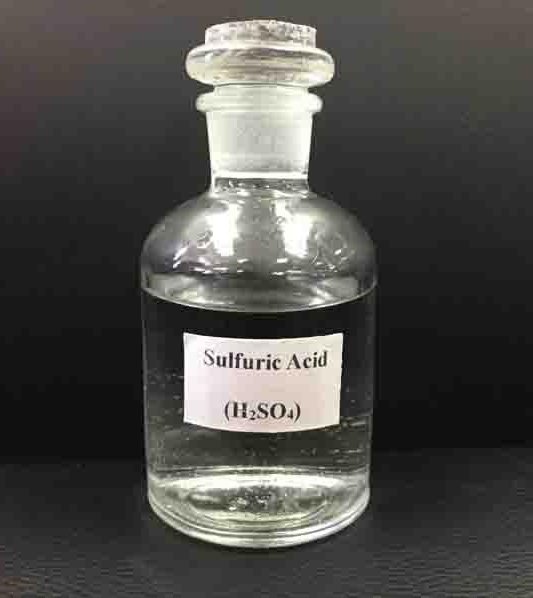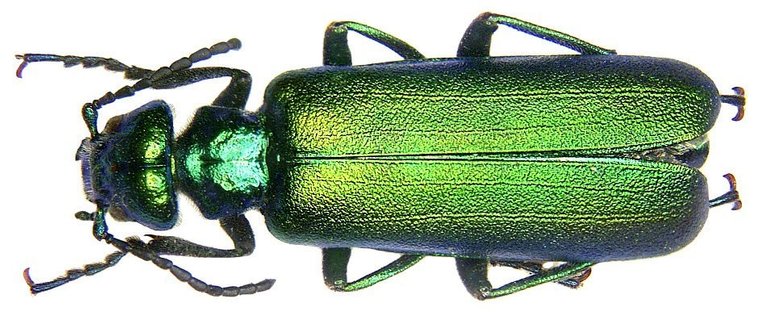[Toxicology] - Animal, Inorganic Acid and Base, and Inorganic Metallic Poisoning
Still on toxicology and poisoning, today I will be discussing an animal poison known as Cantharides Poisoning, then I will discuss Inorganic Acid and Base Poisoning, looking at mineral acids and caustic alkali poisons, as well as inorganic metallic poisoning. Let's begin as without any delay.
Cantharides Poisoning is an animal poisoning caused by blister beetle and it is known as a Spanish fly, with a botanical name Cantharis vesicatoria of the Meloidae family. This beetle has an emerald green color. When its' liquid is administered locally, it causes blister formation. The active principle of Cantharis vesicatoria is cantharidin. The beetle is beautiful and its powdered form is shiny as well but just as shiny as it is, it is very potent, causing lots of harm when used as a poison. The poison can occur locally or via ingestion. When administered locally, I said previously that it causes blisters, and it also causes inflammation. When injected, it can affect a lot of organs, causing multiple organ damage, as well as affecting the tracts in the body. It will affect the Gastrointestinal tract, the Urinary tract even the external genitalia, and it also affects the Central nervous system. This poison is corrosive and causes irritation in the mouth, throat, esophagus, stomach, and other parts of the Gastrointestinal tract. The poisoning in the gastrointestinal tract leads to blisters in the lips and gastrointestinal tract, difficulty in swallowing, and speech formation, it will lead to nausea, vomiting of blood as well as bloody diarrhea. This will also affect the kidney, damaging the kidney which would begin manifestation as loins pain, it will cause excessive urination as a result of the kidney not functioning properly. It will lead to painful urination in the external genitalia and would lead to severe genitalia pains in women, and could cause abortion in pregnant women. It could move further to the central nervous system where the patient would start having seizures, and coma, which could lead to death. Its lethal dose is about 10mg of Cantharidin its active principle, 1.5gm of the powdered form, and swallowing the beetle. treatment would include, stomach wash, Demulcent should be administered, albumin should be given to the patient, and treating the patient symptomatically.

https://commons.wikimedia.org
I have discussed organic acid poisoning where I explained certain organic poisons like Oxalic Acid, and Carbolic Acid, so let's go to inorganic acids and base poisoning. Inorganic acids are very corrosive and are derived from inorganic compounds. These acids include HCl, H2SO4, and HNO3. Caustic Alkalis on the other side too is corrosive, including KOH, and NaOH. These acids and bases can become irritants when diluted, causing local effects mainly, but can cause systemic (shock), and respiratory damage. These damages include water extraction from tissues, changing Hemoglobin to hematin, and cellular protein coagulation.
When these poisons are ingested or contacted locally, they begin reactions immediately causing different signs and symptoms, which would include the burning of the gastrointestinal tract, difficulty swallowing, thirst, vomiting, corrosion of the mouth and the neck, tongue inflammation, or damage, constipation, urinary tract syndrome, damage of the larynx, malnutrition, esophageal damage, pulmonary edema, tenesmus (alkali), and bloody stool with mucus (alkali). In the respiratory tract, the symptoms would include dyspnea, edema of the glottis, and hypostatic pneumonia, and systemic effect would include pale skin, clammy skin, sunken eyes, dilated pupils, weak pulse, and it can lead to death in cases of suffocation, perforation of the stomach and shock. Treatment will be the use of a Levine tube should be employed for aspiration, and there should be no stomach wash, in cases of acids, strong alkaline carbonate (NAHCO3) should not be used rather weak alkaline like albumin can be used, and cases of alkalis, weak acids like vinegar can be used. Morphine can be given for pain relief, tracheostomy will help the patient breathe. Postmortem results will show stomach perforation, corrosion of the respiratory tract, and irritation in organs will be seen.
In discussing Inorganic Metallic Poisoning, I will begin with Lead Poisoning. This poisoning can occur via inhalation, absorption through the skin layer and mucus membrane, and ingestion. When it is absorbed into the body, it causes muscle spasms after which it reaches the peripheral and the central nervous system. It can be caused by different sources such as Lead (II) acetate, lead carbonate, lead tetraoxide, Lead Chromate, Lead monoxide, Lead sulfide, and Tetraethyl lead. Lead sulfide is the least poisonous of them all while Tetraethyl lead is the most poisonous of them all. Patients suffering from Arsenic poisoning will have the same symptoms as lead patients except that the patient's stool will be dark and black, with diarrhea, and an offensive smell. In the gastrointestinal tract, it causes a metallic taste in the mouth, dry throat and thirst, nausea, vomiting, and abdominal pain. In the nervous system, it can cause headaches, sleeplessness, paralysis, hallucination, delirium, mental changes, convulsion, or insanity. In the peripheral nervous system, it would affect the muscle, causing spasms, and it will affect the kidney and causes paralysis. In pure form, only one or two drops of lead can be fatal, 20g in Lead Acetate and 40g in lead carbonate can be poisonous, with a fetal period of 2 days. Treatment in case of acute poisoning in cases where the lead is ingested, then magnesium sulfate and sodium sulfate are used to wash the stomach as the lead will be converted to lead sulfate and washed out. Antidotes such as EDTA and penicillamine are used to treat LEAD, dialysis can be done, while other forms of treatments are symptomatic.
https://academic.oup.com/ckj/article/6/2/201/382484
https://pubmed.ncbi.nlm.nih.gov/8765116/
https://www.bmj.com/content/2/5208/1290
https://www.msdvetmanual.com/toxicology/cantharidin-toxicosis/cantharidin-toxicosis-in-animals
https://www.pediatriconcall.com/poisoning-center/hydrochloric-acid-muriatic-acid/67
https://medicoapps.org/m-poisoning-mineral-acids/
https://drs.illinois.edu/Page/SafetyLibrary/MineralAcids
https://www.mountsinai.org/health-library/poison/hydrochloric-acid-poisoning
https://www.msdmanuals.com/professional/injuries-poisoning/poisoning/caustic-ingestion
https://www.rch.org.au/clinicalguide/guideline_index/Corrosives_-_Caustic_Poisoning/


I've been wondering if kids mistakingly play with beetles with these "Cantharides Poisoning." Imagine babies clawing on the ground what we mostly see here in Africa, most of our places are full of dust that our babies may come in contact with beetles 🪲. I've really learnt some and I would teach my kids how they shouldn't play with beetles.
Funny enough, it is found in warm regions. There are a lot of things that we do not know that are very toxic but maybe I would call it instinct or just good judgment, we often do not go near them. I do not think this particular beetle flies everywhere like Tsetse fly in Africa
Thanks for your contribution to the STEMsocial community. Feel free to join us on discord to get to know the rest of us!
Please consider delegating to the @stemsocial account (85% of the curation rewards are returned).
Thanks for including @stemsocial as a beneficiary, which gives you stronger support.